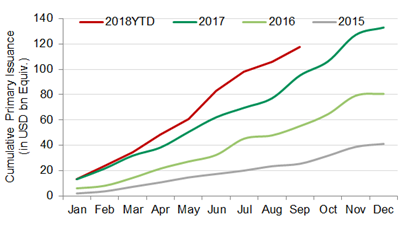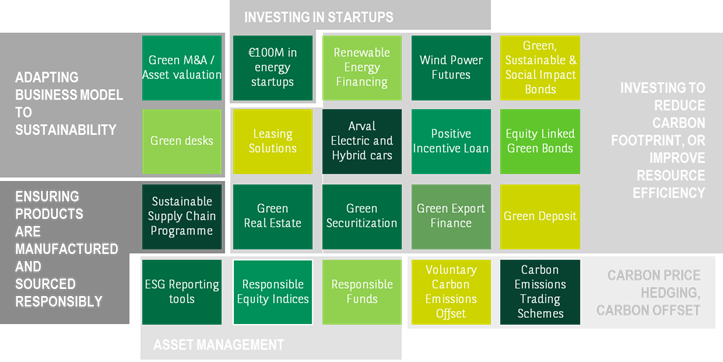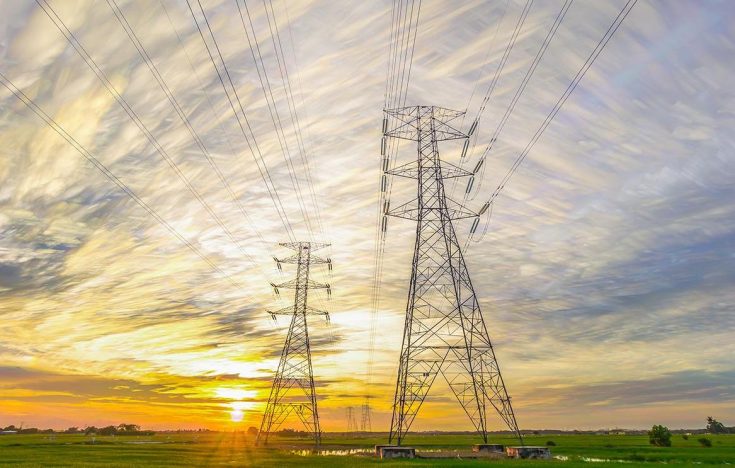Electric cars, solar generators or wind turbines are likely to be some of the
first elements jumping to mind when anyone thinks about sustainability, few
industrial players are as important to support the momentum towards the energy
transition as energy grid operators.
Grid
operators are responsible for the transmission of energy from the production
point to the end consumer, be it industrial or residential. As the core actor
within the energy ecosystem, the status of the infrastructure they manage is a
key part of everyone’s daily life as well as a key enabler for the energy
transition.
Over
the past few years, leading companies have invested heavily to meet sustainable
targets in line with shifting investor objectives and broader shifts in the
thinking of society at large. This has been true in the energy production
sector, but the pressure coming from governments, consumers and investors alike
have pushed for investments from grid operators too, rejuvenating the networks,
investing to make sure the network they manage is compatible with a sustainable
society.
For
such assets-intensive companies, managing long-term infrastructure requires
heavy investment, the support of the investor community and the ability to tap
optimum sources of funding, pools of investors and enhanced financing costs are
key. In line with the Paris Agreement of 2015 helping to foster a global
framework for political actors and countries around the world, the world’s
largest asset managers have also invested heavily to put in place investing
strategies geared towards helping companies pushing a sustainability agenda.
Thanks to these efforts, companies demonstrating a commitment to sustainability
can leverage “green instruments” such as Green Bonds and/or Positive Incentive
Loans, whose benefits include:
- a lower risk assessment in the long-term from investors and lenders, and
- an enhanced cost of financing through the use of dedicated green products, or the achievement of specific ESG /KPI selected targets.
Terna’s long-term commitment to sustainability
Carved out from Enel in 1999, Terna has seen the benefits of a strong commitment to sustainability very early in their corporate history.It has been Terna’s 10th year in a row being included in the Dow Jones’ Sustainability Index this September. Terna achieved its highest ever score and the highest for an electricity operator – as determined by the Swiss sustainability rating RobecoSAM – is a demonstration of such commitment.
Terna is also part of the sustainability indices across the globe, from FTSE4Good and STOXX ESH Leaders indices to MSCI Global sustainability Index and Euronext VigeoEiris.
Despite their role being at the heart of the energy and electricity ecosystem, Terna did not only focus on reducing its carbon emissions or optimising its energy use ratio, but it also pushed on other axis to be part of a more sustainable society.
A notable example was a transformation of its grid in Lombardy, where Terna was able to remove old and unnecessary electricity pylons. Other concrete actions taken included enhanced promotion of recycling as well as decommissioning of old lines.”
The increasing demand for green financial products
![Diversification of Sustainable Bond Market [Source: Bloomberg, BNP Paribas, as of 20th September 2018]](https://cib.bnpparibas/app/uploads/sites/2/2021/03/20181113153940-diversification-of-sustainable-bond-market.png)
Over the past few years, the market demand for green financial products has increased, with a new depth of investment pools focusing on this new asset class. The total market has grown rapidly in the last few years, with demand from issuers coming from a diverse range of industries.

This expansion has been driven by a combination of the increased availability of dedicated pools of capital, recurring demand from investors for sustainable efforts by issuers, improved taxonomy of frameworks, standardisation of scoring methodologies used by ESG service providers, and efforts from leading companies to align with the United Nations Sustainable Development Goals.

Terna’s inaugural €750m Green Bond
The favourable investing environment allowed Terna and its banking pool, including BNP Paribas acting as green structuring advisor, to deliver on an inaugural Green Bond aligned to Terna’s green bond framework. Vigeo Eiris was selected as the Second Party Opinion Provider on Terna’s inaugural Green Bond. The transaction was part of Terna’s €8bn Medium Term Notes Programme (EMTN), rated BBB+ by Standard & Poor’s, Baa1 by Moody’s and BBB+ by Fitch, in July 2018.The net proceeds from the issuance will be used to finance the company’s eligible green projects identified in accordance with the Green Bond Principles 2018, published by the International Capital Market Association (ICMA). Through this issuance, Terna confirms their strategy which is aimed at combining sustainability and growth to promote the current energy transition and generate greater benefits to their stakeholders in Italy.
The transaction was led by Terna’s finance and CSR teams and BNP Paribas acted as green structuring advisor. The issue raised sizable demand from investors which was more than 5.5 times oversubscribed. This was a testimony of the growing appetite of investors for green financing products from issuers with strong green credentials and a clear sustainability strategy.
Key feature of Terna’s inaugural €750m Green Bond
| Issuer | Terna – Rete Elettrica Nazionale S.p.A. |
| Product | Green Bond |
| Date of Announcement | 16 July 2018 |
| Notional | €750 |
| Maturity | 5 years |
| Green Structuring Advisor | BNP Paribas |
| Credit Rating Agencies | S&P, Fitch and Moody’s |
| Second Party Opinion Provider | Vigeo-Eiris |
Terna’s inaugural €900m ESG linked Revolving Credit Facility
In September 2018, BNP Paribas worked in partnership with Terna SpA (“Terna”) to help issue a new ESG-linked credit facility of €900 million alongside several other banks, with BNP Paribas acting as sustainability coordinator.Following the success of the Terna’s Green Bond issued in July 2018, this new facility has been designed to apply discounts or premiums to the financing margin and commitment fee according to the performance of specific environmental, social and governance (“ESG”) objectives. The facility represents a general corporate purpose facility and has a 5 year maturity. This transaction demonstrates the Group’s strong commitment to the introduction of a model that aims to reinforce sustainability as a strategic lever for creating value for all its stakeholders.
Key feature of Terna’s inaugural Positive Incentive Loan
| Borrower | Terna – Rete Elettrica Nazionale S.p.A |
| Product | Positive Incentive Loan |
| Date of Announcement | 24 September 2018 |
| Total commitment | €900 million |
| Maturity | 5 years |
| Sustainability Coordinator | BNP Paribas |
As a corporate focused on operating critical infrastructure and committed to a long-term sustainable strategy, Terna has harvested the benefit of its position by taping the fast-growing green market and increasing demand for ESG products. Terna has also garnered the underlying benefits for its development strategy with an attractive financing cost, thereby demonstrating again that investing in sustainable projects delivers direct corporate benefits in addition to benefits for society.
